Interest in handicrafts is returning after being forgotten. Industrial-style products, repeatedly stamped and replicated, are becoming boring, unlike original and unique things made with your own hands.
What is patchwork: fabric requirements
Handicrafts were the lot of grandmothers who survived the war and treasured every scrap. Not a single thread in the house was wasted. The house was always cozy and comfortable. It is the things made with love by one's own hands that can convey warmth.

Multi-colored patches united into a single fabric, using the patchwork technique, gave a good mood with just one appearance. This fabric is called patchwork. The material for patchwork is diverse. Today, this sewing technique is becoming popular again. Not because of a lack of products or money, but as an interesting and exciting activity, revealing creative potential. Creating bright ornaments is akin to drawing a mandala or initiated.
The simplest method of patchwork sewing is to connect pieces of fabric in the form of squares; a correctly selected color scheme will give the product a colorful look.
Requirements for patchwork fabrics:
- the structure and type of fabric must be the same, otherwise coarse with thin material, or stretch with burlap do not go well, patchwork fabric is suitable;
- choose fabrics for patchwork with small patterns of different colors;
- Harmoniously matched pieces of fabric in color should alternate in a mosaic.
Interesting! There is an opinion that patchwork appeared in America. In the 16th century, colorful, bright, rich fabrics were imported to England from India, and then a ban was issued on the import of imported fabrics and patchwork fabrics, pieces, and scraps came into use. Now they are called American patchwork fabrics.
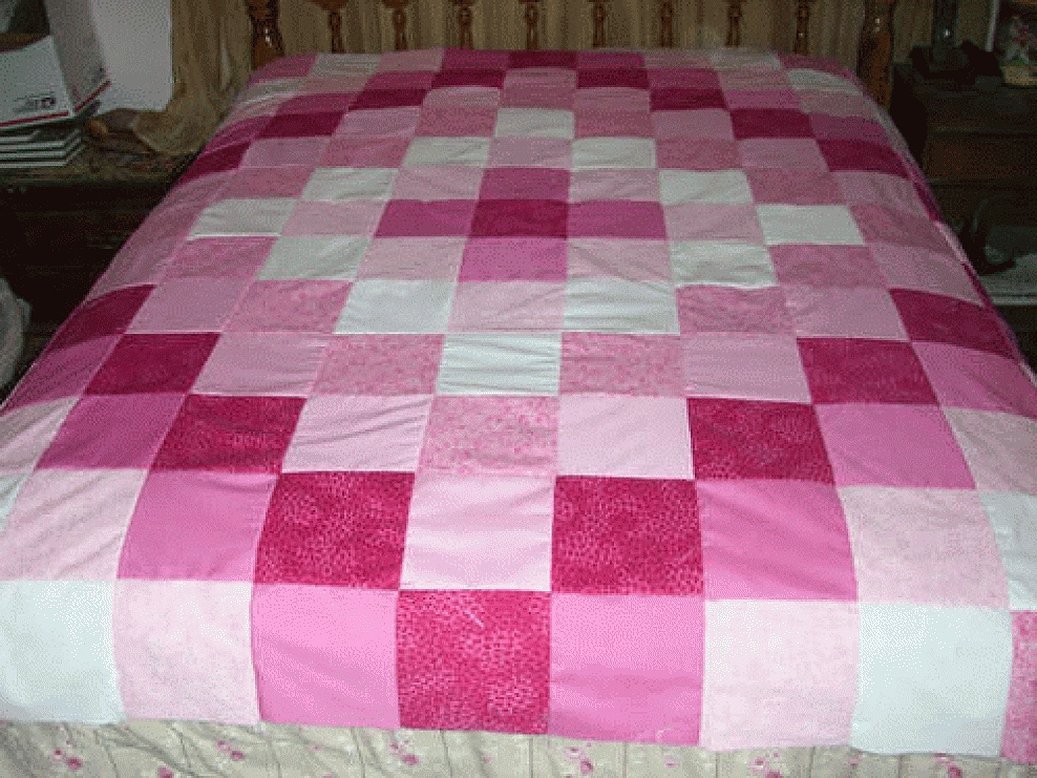
What fabrics are suitable for patchwork: description of materials
Leftover fabric for handicrafts was in demand during hard economic times. Household items and clothing decorated with bright scraps relieved stress and depression, and were pleasing to the eye.
Some types are more convenient to sew by hand, are more common and therefore more popular. Chintz, viscose, linen scraps come to hand more often than denim fabric of different colors. Thin drape or felt is also not at hand. To create original products today, many resort to buying roll remnants by the meter, which are sold at a discount. American fabrics for patchwork look great.
Cotton
Cotton fabric is the leader among other fabrics for patchwork. The high density of the material and ease of cutting and sewing make cotton popular in handicrafts. The fabric is easy to dye, so there is no shortage of bright patches of different colors. The material does not crumble at the edges, which is important when handwork. The simplest products are homemade potholders and napkins, bedspreads and chair covers, pillowcases and baby blankets. White and black are considered popular colors. It has a cheap cost.
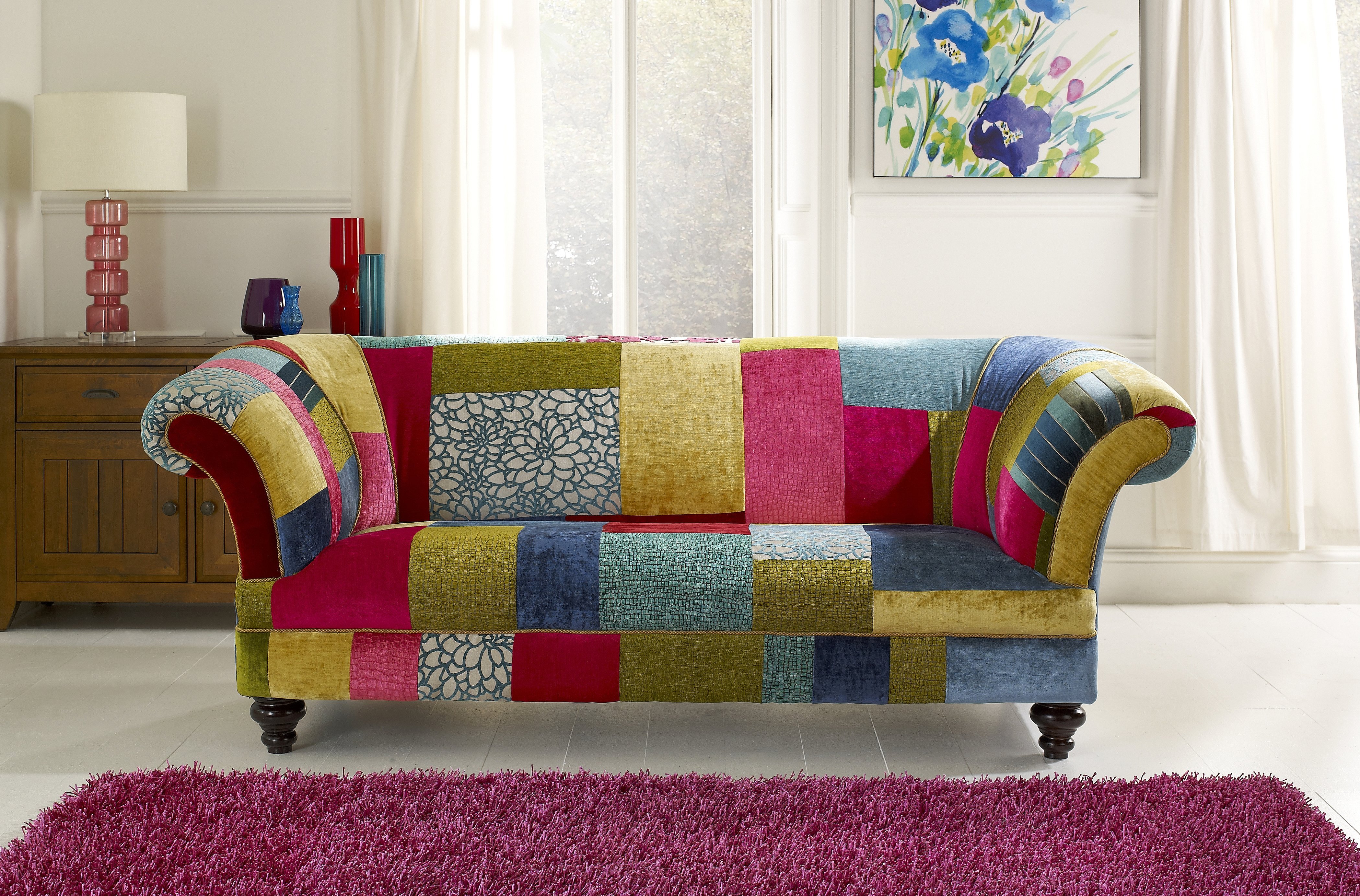
Jeans (Denim)
A good find for handicrafts is denim. If you have multi-colored scraps or trimmings of different colors at home, you can sew a beautiful blanket from them, in order to avoid losing pieces. Synthetic padding or batting is used as a filler. The second will be heavier, so one layer will be enough. Denim is durable and strong. You can sew a pillow or a bolster to go with the blanket.
Interesting! In the 80s of the last century, bags made of denim were popular. Embroidery with beads and lurex threads. Patch pockets and appliques on clothes are also considered to be patchwork art. If it is difficult to find fabric of the same thickness, you can use a little trick. You can use a lining material under thin fabric to even out the density.
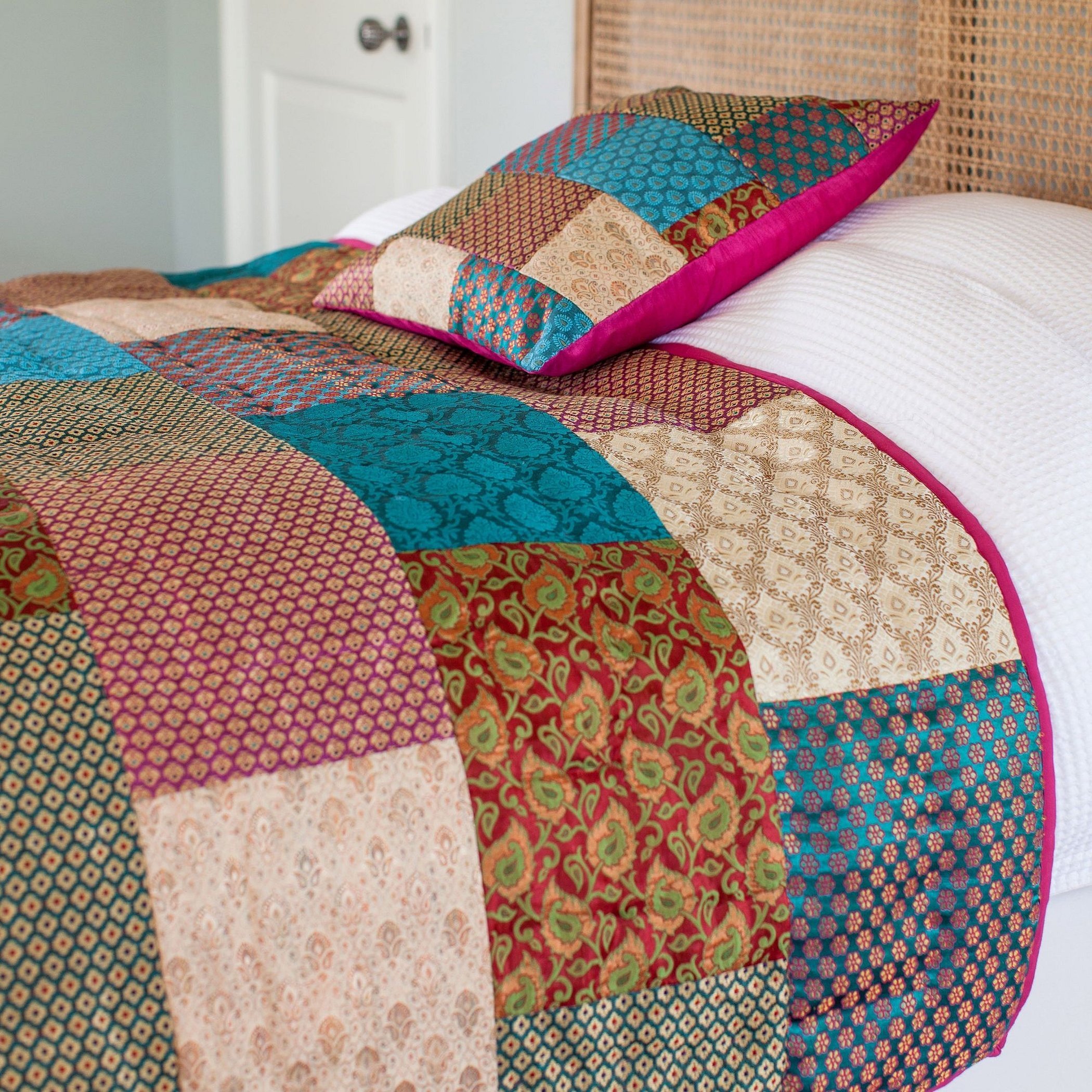
Flax
Linen fabrics remain irreplaceable for making home textiles. The natural material has many advantages:
- Ecologically friendly and hypoallergenic.
- High quality thermal conductivity.
- Breathability.
- Strength and durability.
- Durable coloring, color retention throughout the entire service life.
- No static electricity.
Attention! It is in demand and inexpensive.
Viscose
Mixed fabric obtained by combining natural and synthetic fibers in different proportions has long occupied a dominant position in the textile production market. Clothing and household items made from viscose fabric have long become familiar and appreciated.
Mixing the main cotton on the warp and technical thread, which is in demand in the automobile industry, food industry and even in aircraft construction, gives the output material with excellent characteristics. It is popular in the USA.

Wool
Woolen fabric can be used to sew blankets or rugs, potholders and seat cushions. The high thermal conductivity of the material is used for therapeutic and preventive purposes for many diseases. Joint pain and sleep disorders go away when resting under a woolen blanket. Wool scraps and rolls are combined by thickness and degree of prickliness. The edges of the blanket are made of soft material, leaving dense ones in the center of the product.
Drape
A material that is produced in a single color without patterns. It combines well with fleece and suit fabrics. The products are decorated with embroidery, appliques, and bright edging. Warm fabric is used for warming products such as blankets, quilts, and mittens.
It is difficult to name fabrics that cannot be used in patchwork. Much depends on the creative flight of the needlewoman's imagination. Combining scraps of different textures into a harmonious pattern is a unique talent.

What fabrics are not very good for patchwork and why
There are moments in handicrafts that are very difficult to implement. The use of silk loose fabrics in patchwork is limited due to its "creep". Silk, like stretch, can stretch diagonally, deform and crumble at the edges of the cut. This causes a lot of inconvenience. The finished product may not last long due to the low strength of the material. It is much easier to make a bedspread from satin.
Important! Chiffon, organza and nylon have a transparent structure and high shedding, which also complicates sewing products. It is much easier to use lining materials.
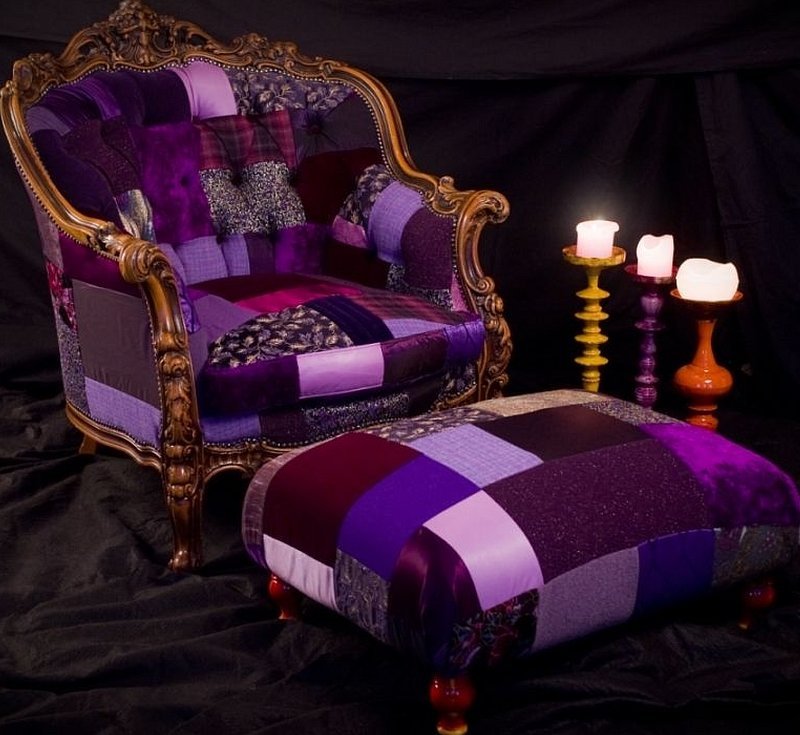
How can you combine materials?
If the fabric is difficult to match in color, then it is decorated with small details in the form of appliques or decorative cords. In order to have as many choices for handicrafts as possible, it is necessary to take household items that are not worn, are outdated or have deteriorated. Visit sales and second-hand stores. Good fabric can always be found not only for patchwork, but also for other handicrafts.
The combination of fabrics of different structures must be done very skillfully, otherwise it will look like a gypsy tent. The use of satin with drape is hardly acceptable if the latter does not act as a base, and the former is an element of decoration in applique. The use of American fabrics along with Indian and domestic ones in handicrafts is welcomed.

Before starting work, it is necessary to make many blanks of the required sizes. The required number of squares should be cut in advance according to a single template, and the decorative cords and embroidery elements should be prepared for application to the product. If there is a shortage of material, starting work is not always interesting, because the pattern must be laid out, combining different shades.

If the stock of scraps at home is exhausted, it is necessary to replenish the scraps. In extreme cases, in a specialized store you can find everything you need for handicrafts at home.

Interesting examples using different fabrics
The creative process gives birth to many ideas for embodiment into real products. Regular patchwork develops into something more over time. Creation of wall panels, "live" paintings, toys and accessories. Embroidering small crafts with beads and creating a whole planet of crafts.
Using satin ribbons and lace in patchwork is a whole art. What products can be made from available materials.
- upholstery for furniture, a bright accent in a modern style for variety in the interior;
- hand-embroidered sofa cushions emphasize the home comfort;
- a decorative panel or patchwork wall made of bright details with characters and a unique design;
- rugs made of patches and whole runners, in colorful and rich colors;
- stylish napkins and potholders for the kitchen;
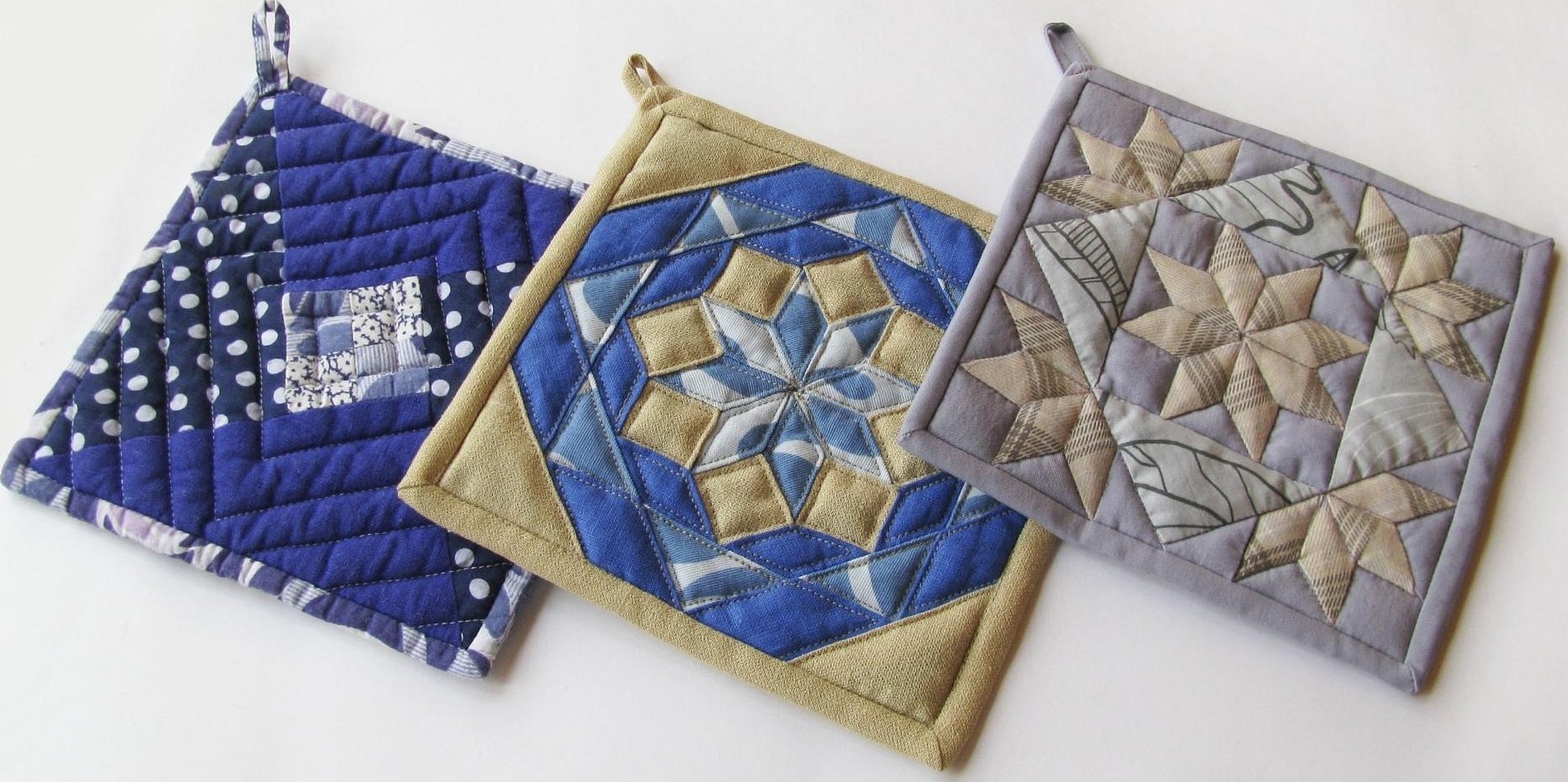
- cushions under the back or on the seat;
- blankets and bedspreads for an armchair, sofa, bed;
- tablecloth for coffee table;
- bamboo furniture cover.
Please note! For a child's room, you can make rugs for a computer desk, napkins for tea parties, chair covers, bedspreads and pillowcases with favorite cartoon characters. Multicolored toy bags and cosmetic bags for a little fashionista, outfits for dolls and beds for toy dolls.

Preparations for the New Year become an exciting event, when masquerade outfits and theme costumes are prepared. The youngest will be interested in a homemade puppet theater with putting matryoshka dolls on the hand, and from thicker fabrics, a finger theater with the smallest animals. These toys are put on the finger. Making a home alphabet or a wall clock that really "ticks". Transforming the space for children into a fairy-tale land of good wizards.
Pets will love a soft bed-lounger made of patchwork fabric. And the curtains in the kitchen can be multi-colored. Life is more beautiful, and the heart is kinder. The most amazing discoveries were made by creative people. The creation of coziness and comfort is within the power of the most ordinary caring hands.
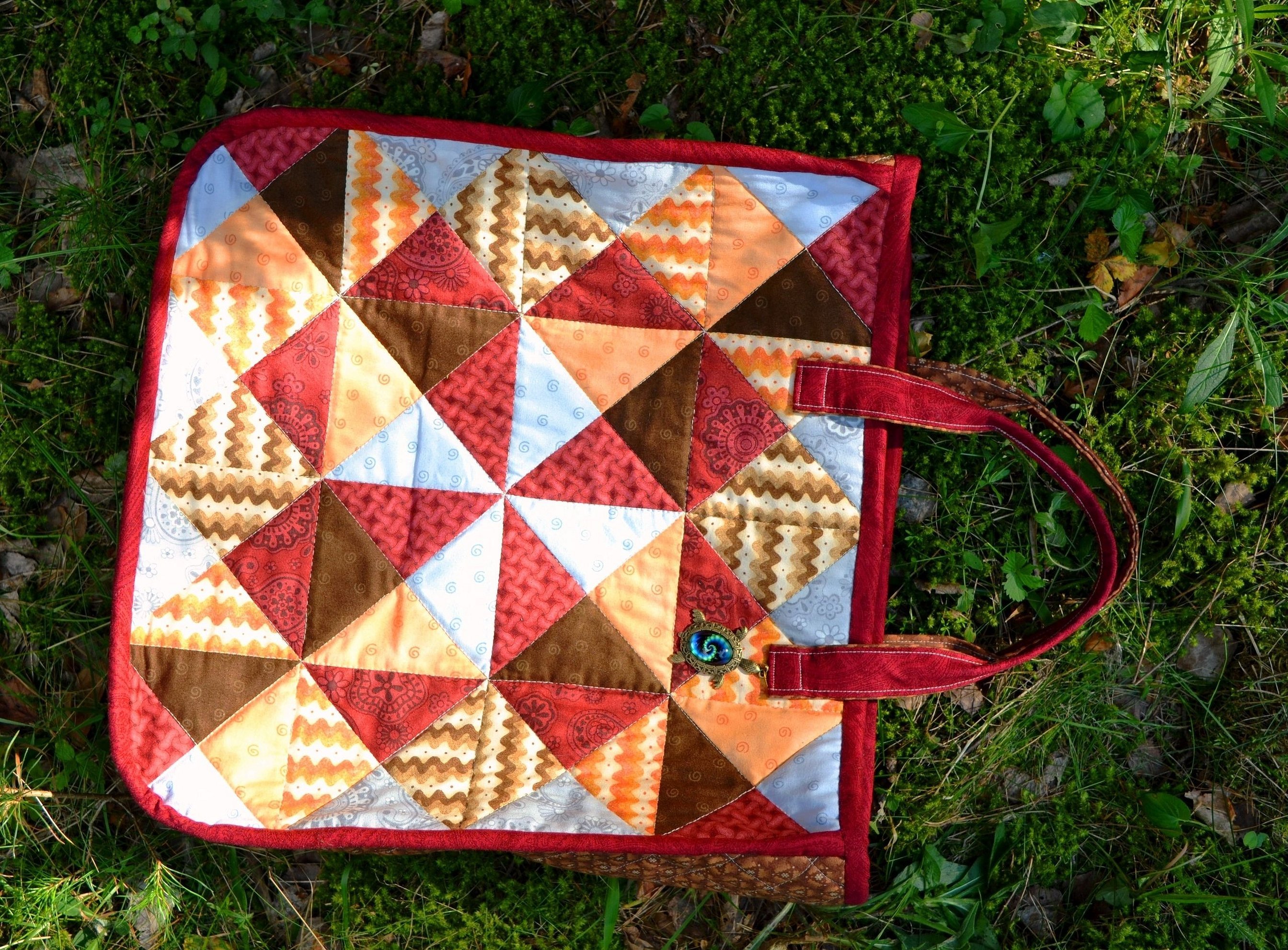
It is better to start small, for example, with a potholder. It is much easier than it seems. A combination of different colors plus the will of imagination - you can make truly beautiful things for your home with your own hands and fill it with coziness!




